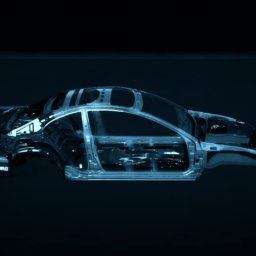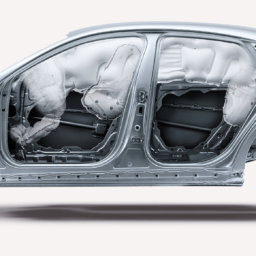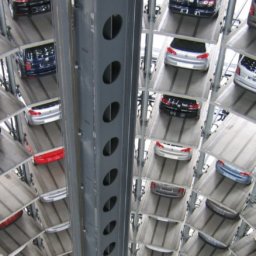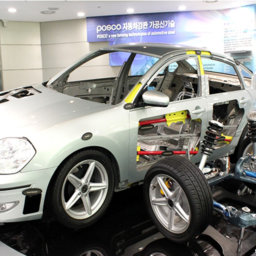Car safety has evolved tremendously over the last several decades. While it is hard to remember a car that did not come with seatbelts, airbags, and antilock brakes, those features only became standard-issue within the last few decades. Today, automakers are pushing innovations in safety even further. By upgrading existing safety technologies and introducing new ones, cars are safer than they have ever been.
Below we take a look at five of the most exciting advancements in car safety. From new technologies that help drivers steer the car to stronger frames that protect passengers, see how the auto industry is working to keep passengers safe.
Lane Departure Warning
Blind spot warning systems use sensors to alert drivers when another car is in their blind spot. Typically a dashboard or in-mirror icon will alert the driver with increasing brightness or sound alarms depending on the proximity.
Blind spot warnings are a fairly new offering, first showing up in luxury cars, but finding their way into more affordable cars. Because these systems also alert drivers when bicyclists or pedestrians are out of their field of vision, they offer huge step forward for those inside and outside of the car.
Electronic Stability Control (ESC)
Electronic Stability Control, or ESC, systems have automatic sensors that detect whether or not a vehicle is traveling in the right direction based on the steering wheel input. If the car suddenly slides out of control, ESC will automatically activate to apply brakes and engine torque to self-correct.
While ESC first appeared on luxury cars in the 1990s, as of 2012, they were required on all new vehicles in the US.
The Insurance Institute for Highway Safety has said that ESC lowers the risk of a fatal single-vehicle crash by about half, and the risk of a fatal rollover by as much as 80 percent. Most safety experts view ESC as a must have feature when buying a new or used car.
Blind Spot Warning
Blind spot warning systems use sensors to alert drivers when another car is in their blind spot. Typically a dashboard or in-mirror icon will alert the driver with increasing brightness or sound alarms depending on the proximity.
Blind spot warnings are a fairly new offering, first showing up in luxury cars, but finding their way into more affordable cars. Because these systems also alert drivers when bicyclists or pedestrians are out of their field of vision, they offer huge step forward for those inside and outside of the car.
Front Crash Prevention
Front crash prevention systems alert drivers when their car is moving toward oncoming traffic too quickly. Using cameras or lasers to gauge distances between cars, drivers are given a visual, audio, or vibration alert to get their attention so they can brake in time to avoid a collision. Also, some automakers are going even further by integrating auto braking features that will give a warning while also automatically slowing the car without the driver’s input.
Research from the Highway Loss Data Institute (HDLI) showed that front crash warnings could reduce rear-end crashes by 23 percent, while front crash warnings with auto braking could reduce collisions 39 percent.
Advanced High Strength Steels
Because of the many technological advancements made in collision prevention systems for drivers, many people forget that steel has made huge strides in the last 15 years. While the average car build in 1975 utilized just 3.6% medium and high strength steels, by 2007 that percentage had increased by more than 230%.
Until recently, most high strength steels were brittle and difficult to work with – not to mention heavy – while lightweight steels were too weak. Today’s advanced high-strength steels (AHSS) have been able to bridge that gap by providing materials that are strong, lightweight, and formable.
POSCO GIGA STEEL has a tensile strength over 1,000MPa and is over 3x stronger than aluminum. In addition to providing the strength needed to meet safety regulations, it is also ideal because of its formability and affordability. Because POSCO manufactures several types of steel with tensile strengths over 1,000MPa, POSCO GIGA STEEL can be utilized in specific ways to meet the unique needs of car makers.
















